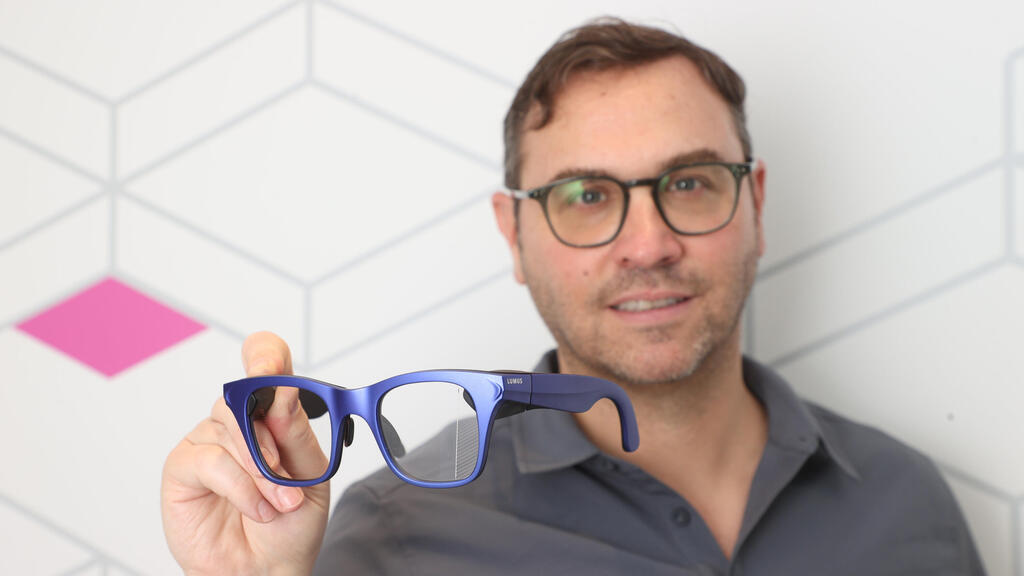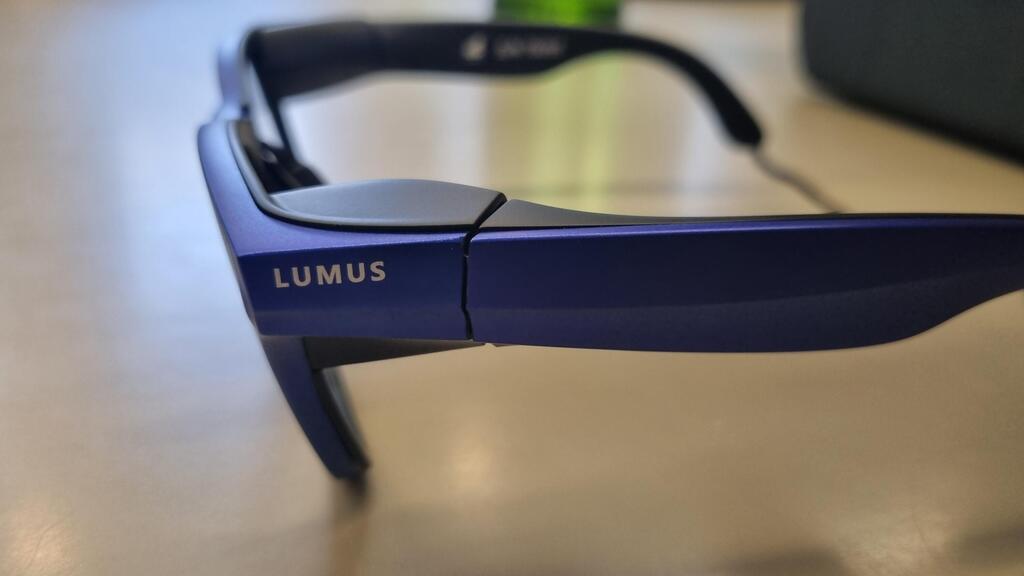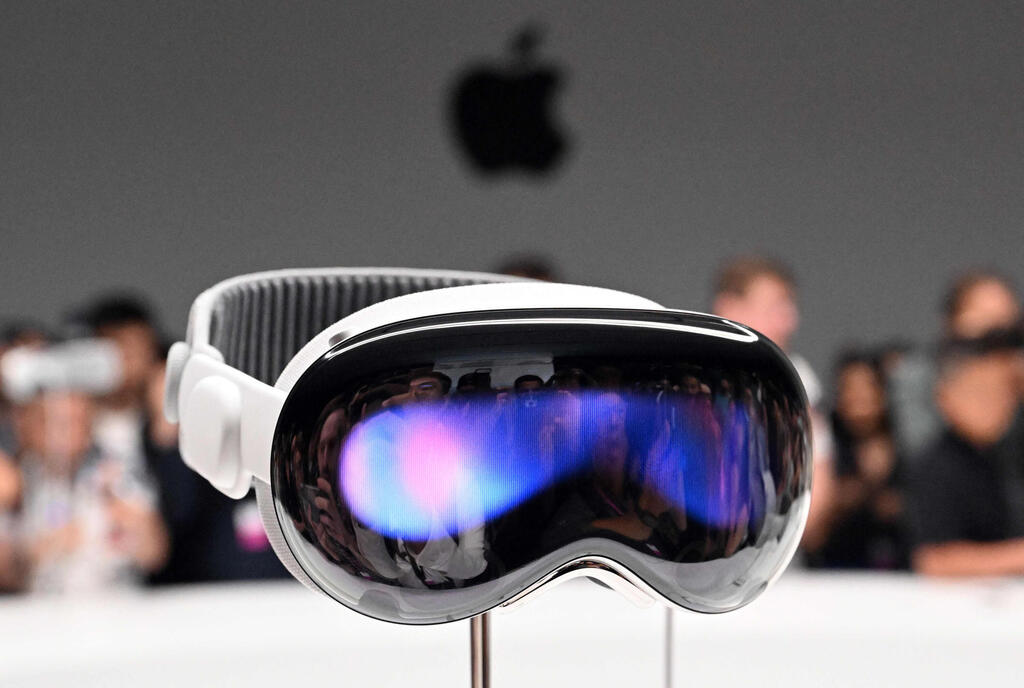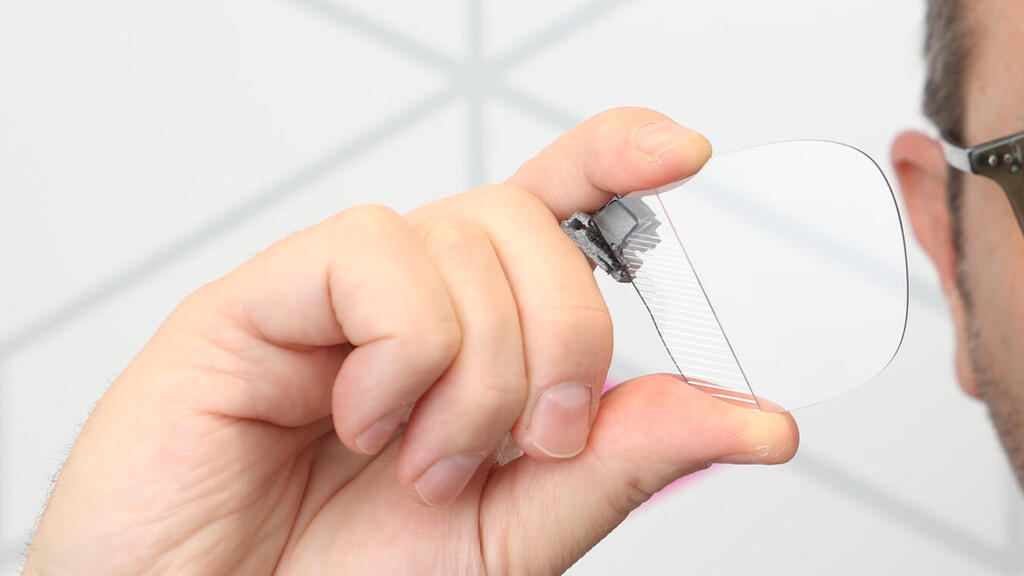After 23 years in the optics for augmented reality (AR) glasses industry, Lumus is poised for a breakthrough. By 2025, two major tech giants are set to incorporate Israeli Lumus lenses into their glasses.
Read more:
"In the ecosystem that will develop in the coming years around the developing market for augmented reality glasses, Lumus aims to position itself like Intel, which sells its chips to most players in the market - even if they are companies that compete with each other," says company CEO Ari Grobman.
"All the components in the augmented reality glasses already exist in the smartphone. The only thing that needs to be built from scratch is the waveguide (the lens). And like David versus Goliath, we have a very unique advantage."
The advantage Grobman is referring to is Lumus' technology called a reflective waveguide, setting it apart from competitors using diffractive waveguides. Lumus claims their solution, based on integrated tiny mirrors inside the lens, offers a brighter display, accurate colors, a smaller projector, and longer battery life.
Grobman explains, "Due to our early entry into the market, coupled with the fact that we've registered many patents, other companies were forced to focus on alternative technologies by the time they came onto the scene."
Grobman believes technology giants see augmented reality glasses as the next frontier in computing. He explains, "You can do much more with them - use larger screens, enrich how we perceive the physical world, and with advancements in AI and image recognition, add context to the things you look at."
For years, major tech companies have been pursuing the dream of augmented reality glasses, promising to blend 3D digital elements seamlessly into our physical world. However, their attempts have fallen short.
Google's consumer-focused Google Glass flopped, Microsoft pivoted to target corporate and industrial sectors with HoloLens, and Magic Leap struggled to appeal to consumers. These devices' egregious price points, sheer weight, bulkiness, and short battery life brought about their undoing.
In recent years, the most significant development in the augmented reality glasses industry came with Apple's announcement of the Vision Pro headset. This move has provided a significant boost to the field, signaling that AR glasses are on the brink of mainstream adoption.
According to Grobman, "the convergence of various supporting technologies has made it possible to create these devices. Advances in optics, artificial intelligence, computing power, movement tracking, voice recognition, and wireless networks have all contributed to this convergence. With billions of dollars being invested in the sector, the momentum is unmistakable, and the potential for AR glasses has never been greater."
The Vision Pro, Apple-esque hype and excitement aside, is a far cry from the industry's ideal augmented reality headset. Despite its hefty $3,500 price tag upon release next year, it remains bulky and weighty, connected by a cable to an external battery. Moreover, it features no transparent lenses like Lumus' development, relying on video cameras to display the physical environment through internal screens.
"What we have is exactly what Apple needs to eventually turn Vision Pro into glasses," says David Goldman, Lumus' VP of Marketing. "They don't have waveguide technology there. They focus on virtual reality (VR) because it is a more mature platform; She is ready now. It makes sense when you think about it: Apple allows developers to build applications using more mature technology, and when it launches augmented reality glasses it will already have many applications for users."
When will we get to see an AR headset that looks like plain old glasses? "We're approaching it rapidly. We're currently exploring glasses resembling Ray-Ban's style, boasting a field of vision between 30-50 degrees. From our perspective, we're almost there. Expect these products to hit the market by 2025 or 2026."
Will their processor be external or embedded? "In the lighter versions, requiring less processing and providing less immersive AR experiences, the processor will be embedded. That's true for the battery as well."
Manufacturers' challenges won't conclude with the development of regular glasses designs. It's uncertain whether non-glasses wearers would even put them on in the first place, considering the popularity of contact lenses and corrective surgeries.
Grobman believes consumers can be convinced to change their habits, using phone sizes as an example: "Remember 23 years ago, we had tiny phones on the market? We've opted for bigger, heavier phones now because they offer tremendous value and functionality, even if that meant daily charging. Usability has a price."
Founded in 2000 by Dr. Yaakov Amitai, a former Air Force navigator with a physics Ph.D. from the Weizmann Institute, Lumus boasts numerous patents in augmented reality optics. Having raised $82 million from investors like Alibaba, JGV, HTC, Shanda, and Quanta Computer, Lumus is making strides in the industry. Dr. Amitai himself later went on to erect Oorym, another company dedicated to developing AR headset optics.
Over the past decade, Lumus has been a key supplier of lenses and projectors for US Air Force pilots' helmets, partnering with Thales, a French company. The Israeli start-up Augmedics and Korean MediThinQ also rely on Lumus' lenses for their augmented reality surgical headsets. Additionally, Lenovo's ThinkReality A6 headset, designed for the corporate market, features Lumus lenses. With two production lines licensed to Quanta Computer in Taiwan and SCHOTT in Malaysia, Lumus continues to make strides in the industry.
In a recent announcement, Lumus introduced its innovative Z-Lens, designed to mimic regular eyeglasses. With a 2K resolution display, impressive 3,000 nits brightness for outdoor use, and a 50% smaller projector than previous models, the Z-Lens is set to boost consumer adoption. The current 50-degree field of view is just the beginning, as Lumus is already developing the next generation with an even wider 80-degree field of view.
While Lumus remains tight-lipped about the specific companies adopting their Z-Lens technology for augmented reality glasses, CEO Grobman assures that they are major players in the tech industry. Emphasizing their position as pioneers, Grobman confidently states that once these products hit the market, the world will recognize Lumus as the innovative force behind the lenses, propelling them to the forefront of the industry.
It's simple. Look at your smartphones. At this point, you go nowhere without them. They're an extension of you. The thing is, smartphones are a relatively recent invention, and much like everything else people have ever carried around with them, they too are temporary. At some point, we won't need them anymore.
If you've seen "Back to the Future Part III", you might remember a scene where Marty McFly shows kids from the "future" (2015, as it were) how to play a video game with their hands, and the kids couldn't believe the game was so "low-tech" that you had to use your hands to operate them. The same will be true with the transition from smartphones who headsets. Just a matter of time.
According to numerous technology companies, AR headsets hold the potential to revolutionize our daily activities. Imagine reading WhatsApp messages without removing your phone from your pocket, receiving navigation instructions projected before your eyes instead of on a screen, and enjoying 3D content seamlessly integrated into your physical surroundings. These headsets promise to elevate our experiences beyond what we currently know with smartphones.
Some concerns, however, linger. The implications of wearing augmented reality headsets, which can tailor individual experiences of reality, raise intriguing questions about interpersonal relationships. How will notifications popping up during work meetings, conversations with loved ones, or quality time with family affect our interactions? Moreover, do we want technology giants like Apple, Meta, or Google, whose influence on our lives grows ever more substantial, to mediate our perception of the real world? As AR headsets become more prevalent, their societal impact remains uncertain.
AR headsets shaped like glasses to be on market in 2-3 years - Ynetnews
Read More





No comments:
Post a Comment